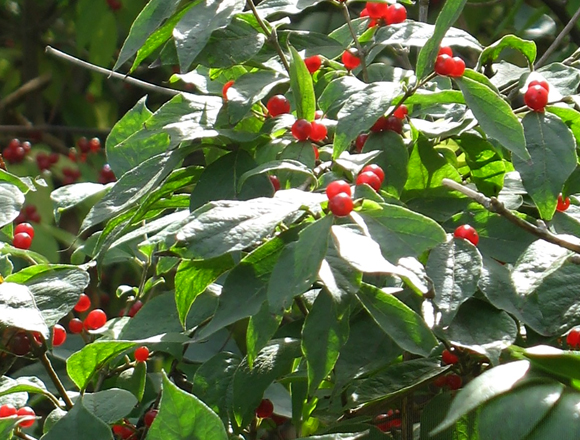Long Term Shelterbelt and Crop Yield Study
Lorem ipsum dolor sit amet, consectetur adipiscing elit. Sed viverra, dui id condimentum auctor, odio purus ornare magna, ultricies ullamcorper purus odio non nisl. Mauris nec sem euismod, elementum orci at, mattis eros. Vestibulum ante ipsum primis in faucibus orci luctus et ultrices posuere cubilia Curae; Sed congue libero a nunc dignissim, eget blandit metus accumsan. Nullam condimentum in leo nec porta. In hac habitasse platea dictumst.
Organic Farm Systems
Lorem ipsum dolor sit amet, consectetur adipiscing elit. Sed viverra, dui id condimentum auctor, odio purus ornare magna, ultricies ullamcorper purus odio non nisl. Mauris nec sem euismod, elementum orci at, mattis eros. Vestibulum ante ipsum primis in faucibus orci luctus et ultrices posuere cubilia Curae; Sed congue libero a nunc dignissim, eget blandit metus accumsan. Nullam condimentum in leo nec porta. In hac habitasse platea dictumst.
Agricultural Landscapes and Habitat QualityJohn Quinn
See Quinn et al. 2014, Quinn et al. 2013, and references therein.
Carbon Sequestration
See Possu et al. 2016, Ziegler et al. 2016, and references therein.
Windbreak Physics and Micrometeorology
see Zhou et al. 2004, Zhou et al. 2008 and Iowa State Shelterbelt Research
Genotype Tree Trials
Beginning in the 1960's, several seed orchards and provenance plantings were started at the Agroforestry Farm in order to select improved plant materials for eastern Nebraska and the Great Plains (Regional Tree Improvement Project NC-99 (formerly NC-51) of the North Central State Agricultural Experiment Stations). Provenance plantings with geographically diverse seed sources were planted for ponderosa pine, Scots pine, bur oak, sycamore, and cottonwood. Seed orchards were established for scots pine and ponderosa pine in the 1970's using superior performing genotypes selected from the original 1960's provenance plantings at UNL's Horning Farm (Van Haverbeke 1986).
The Scots pine and ponderosa pine seed orchards were terminated in the 2000's because of pine wilt and severe hail damage (Rupe 2008). The 50+ year-old bur oak, sycamore and cottonwood provenance plantings still exist at the Agroforestry Farm, as well as bur oak (Angle 1985), honeylocust, silver maple, and green ash plantings established in the 1990's in cooperation with the Great Plains Tree Improvement Committee (Agriculture Canada, USDA/ARS, US Forest Service, Nebraska Forest Service and cooperators).

Windbreak Vegetation Dynamics
The original windbreaks were designed and planted by Dr. Walt Bagley in 1966. There were two planting designs, both with two rows separated by 12 feet (3.65m). Individual trees in each row were planted 6 feet (1.8m) apart. One design used eastern cottonwood (Populus deltoides), scotch pine (Pinus sylvestris) and eastern redcedar (Juniperus virginiana), while the other design used green ash (Fraxinus pennsylvanica), Austrian pine (Pinus nigra) and eastern redcedar. The windbreaks have grown and changed. Because of poor performance, the cottonwoods were removed after 15 years (1981). Pine wilt, a disease caused by nematodes and moved by pine sawyer beetles, killed most of the research farm's scotch pine, which were mostly removed between 2005-2015. Starting in 2016, green ash is threatened by the emerald ash borer, first found in Omaha, Nebraska in summer 2016. If no management is taken, the Nebraska Forest Service predicts that 10% of the farm's green ash will die within 4 years after the beetle reaches the farm. Within 8 years, 80% mortality is predicted. Austrian pine has shown some mortality because of diplodia tip blight (Sphaeropsis blight). After 50 years, the planted species that has performed well has been eastern redcedar. Redcedar has shown outstanding performance as a windbreak species across Nebraska, but it has also become increasingly problematic as an invasive species in pastures, rangeland and native prairie remnants. In addition to the 1966 windbreaks, several pure eastern redcedar windbreaks were planted at the Agroforestry Farm in 1982.
While the windbreaks were losing planted species, other trees and shrubs have invaded. Hiller (2004) observed a total of 32 tree and shrub species invading the windbreaks after 35 years. The most common tree species recruited by the windbreaks include mulberry (Morus alba), and hackberry (Celtis occidentalis), while the most common shrub is Amur honeysuckle (Loncicera maackii). Although, increased plant diversity presumably leads to increased habitat diversity in windbreaks, several of these new species, particularly Amur honeysuckle, are problematic invasive species. As green ash die over the next decade, a continued invasion of bird-dispersed trees and shrubs into the redcedar-dominated windbreaks is predicted.

